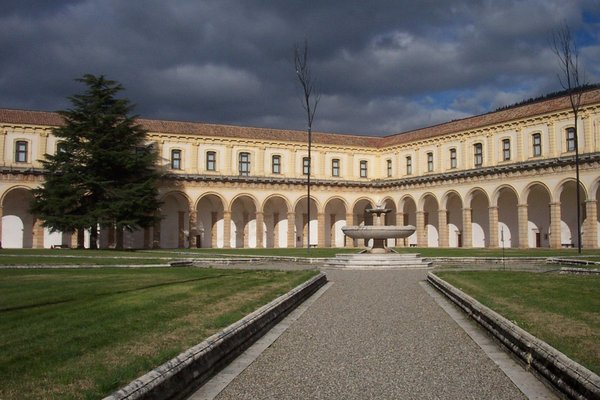Italy
Cilento and Vallo di Diano
Cilento and Vallo di Diano National Park with the Archeological Sites of Paestum and Velia, and the Certosa di Padula comprises a cultural landscape that played an important role in Mediterranean trade, culture and politics.
The area has blossomed since prehistoric times when communication routes were established along the crests of its mountain ranges. Greek colonists left their mark in the form of the city of Poseidonia (Paestum), as did the Phocaeans with Elea (Velia). In the Middle Ages, feudal castles and religious buildings were added along the routes.
Community Perspective: This is a large area, best covered by car in a day or two. Paestum is its most outstanding component.
Site Info
Official Information
- Full Name
- Cilento and Vallo di Diano National Park with the Archeological sites of Paestum and Velia, and the Certosa di Padula (ID: 842)
- Country
- Italy
- Status
-
Inscribed 1998
Site history
History of Cilento and Vallo di Diano
- 1998: Revision
- Derived from the former TWHS Paestum, Posidonia and Certosa di Padula
- 1998: Inscribed
- Inscribed
- Type
- Cultural
- Criteria
- iii
- iv
Links
- UNESCO
- whc.unesco.org
- Official
-
- parks.it — Parco Nazionale Cilento
- Related
-
- paestum.de — Link
- cultura.gov.it — The Monastery of Padula
- sacredsites.com — Link
All Links
UNESCO.org
- whc.unesco.org — whc.unesco.org/
Official Website
- parks.it — Parco Nazionale Cilento
Related Resources
- paestum.de — Link
- cultura.gov.it — The Monastery of Padula
- sacredsites.com — Link
News Article
- Dec. 30, 2013 euronews.com — Crowdfunding to raise 50,000 EUR for Paestum
Community Information
- Community Category
- Cultural Landscape: Relict
Travel Information
Campania hotspot
Recent Connections
-
UNESCO Triple Crown
-
Perfect Inscriptions
1998 -
Alexandre Dumas
Dumas visits Paestum in his work "Le ca…
Connections of Cilento and Vallo di Diano
- Individual People
-
-
Alexandre Dumas
Dumas visits Paestum in his work "Le capitaine Aréna".
-
- Geography
- Trivia
-
-
Viewable from another WHS
Costiera Amalfitana can be seen from the coast of Cilento National Park and the other way around
-
- History
-
-
Ancient Greek colonies
Paestum -
Archaeological 'Type Sites'
The Gaudo Culture is a late Neolithic culture in Southern Italy, primarily in the region of Campania, active at the beginning of the 3rd millennium BC, whose typesite necropolis is located near Paestum, not far from the mouth of the river Sele.See en.wikipedia.org
-
Neolithic age
Capo Grosso - "It has been successively occupied over time by farmers during the Neolithic period, .." (OUV) -
Historical Food Remains
Small underground temple: "It's interesting to note that traces of two-thousand-year-old honey were found in some of the vases." -
Palaeolithic and Mesolithic
Capo Grosso
-
- Ecology
-
-
Dripstone
Grotte di Castelcivita
-
- Architecture
-
-
Cave dwellings
Castelcivita Caves were probably used as a hiding place for Spartacus' rebels army -
Cave Temples or Churches
Grotta dell'Angelo -
Mosaic art
Velia
-
- World Heritage Process
-
-
Perfect Inscriptions
1998 -
Cultural sites rejected for Natural criteria
Initially nominated as a mixed site but rejected for natural values (1998 Bureau Ordinary Session). -
Derived from more than one TWHS
Paestum, Posidonia and Certosa di Padula
-
- Religion and Belief
-
-
Benedictines
Monastery at Bellosguardo, Grotta dell'Angelo -
Goddesses
Paestum: Temple of Hera and Temple of Athena -
Carthusian Order
Certosa di San Lorenzo di Padula
-
- Human Activity
-
-
Vineyards
Castel San Lorenzo -
Secret Locations
Castelcivita Caves were probably used as a hiding place for Spartacus' rebels army. -
Grand Tour
Paestum
-
- Constructions
-
-
Roman amphitheatres
Paestum: Roman amphitheatre -
Tumuli
La tomba del Principe in Monte Pruno -
Macellum
In Paestum -
Bouleuterion
In Paestum -
Lighthouses
Licosa -
Cisterns
Remains of cisterns in Velia -
Theatres and Opera Houses
Greek theatre at Velia
-
- WHS on Other Lists
-
-
Most beautiful villages
Castellabate is among I piú bei borghi d'Italia ('Italy's most beautiful hamlets') -
UNESCO Triple Crown
-
Global Geoparks
2010 -
World Biosphere Reserves
Cilento and Vallo di Diano (1997)
-
- Timeline
-
-
Built in the 6th century BC
2 key episodes (1): Paestum, Temple of Hera "built around 550 BC by Greek colonists" (wiki) -
Built in the 17th century
2 key episodes (2): "Certosa di San Lorenzo at Padula in the Vallo di Diano. Construction began in 1306, but in its present form it is essentially Baroque, built in the 17th and 18th centuries" (AB ev)
-
- WHS Hotspots
-
-
Campania hotspot
By train to Paestum for example, 1.5-2.5 hours from Naples depending on the time of day
-
- Science and Technology
-
-
Libraries
Certosa di Padula -
Botanical Gardens
Bellosguardo
-
News
- euronews.com 12/30/2013
- Crowdfunding to raise 50,000 EUR f…
Recent Visitors
Visitors of Cilento and Vallo di Diano
- Adam Hancock
- Adolfo
- Alexander Barabanov
- Alexander Lehmann
- alicemears
- Ammon Watkins
- AndreaTLV
- Ansitong
- Argo
- Artur Anuszewski
- Aspasia
- Atila Ege
- awestix
- BaziFettehenne
- Bill Maurmann
- Bin
- Birgitte Sørensen
- Cezar Grozavu
- chenqtao
- Cheryl
- christof
- Christoph
- Christravelblog
- Claire Bradshaw
- ClaraHH
- Clyde
- Colossus
- Csaba Nováczky
- Cyberczar
- Damientournay
- Daniela Hohmann
- Daniel Chazad
- Dan Pettigrew
- David Aaronson
- David Berlanda
- David Marton
- Deffra
- Dimitar Krastev
- Dorejd
- Doubanjiang
- DouglasR
- Dr. Caligari
- Elia Vettorato
- Els Slots
- Emilia
- erdsaumnaht
- Evgenii
- Fam39
- Fan Yibo
- Farinelli
- fedemarch92
- Feldhase
- Felicité
- Flexiear
- frizzle
- George Gdanski
- GeorgeIng61
- Gernot
- Hadrianus
- HaraldOest
- Harald T.
- Harry Mitsidis
- hdimoshi
- Hubert
- Iain Jackson
- Ian Cade
- Ivan Rucek
- Jaakkotoivanen
- Jakob F.
- Jakubmarin
- Janina Lehmann
- janis
- Jan-Willem
- Jan Zimmermann
- Jawnbeary
- Jeffrey Chai
- Jens
- Jezza
- João Aender
- Joel on the Road
- Jonas Hagung
- Jonas Kremer
- JoStof
- Joyce van Soest
- Juha Sjoeblom
- KarenBMoore
- Karito Vies
- KentishTownRocks
- Krijn
- Krzysztof B
- La Concy
- Lara Adler
- LaVale
- lichia
- lindaann
- Lisu Marian
- Loic Pedras
- Luboang
- Lucio
- Ludvan
- Luis Filipe Gaspar
- Lukemarshall
- Maciej Gil
- Malgorzata Kopczynska
- marcel staron
- Martin
- Martina Rúčková
- Mathijs
- Matthewsharris
- MAURO PODDA PANI
- MaxHeAnouBen
- Michael Turtle
- Mihai Dascalu
- Mikko
- Mo-han Je
- Monica Tasciotti
- Mtlmr
- nan
- Nasebaer
- Nicole Lampos
- Nihal Ege
- PabloNorte
- Paola Laura
- Patrik
- Paul Schofield
- Peter Lööv
- Petteri
- Philipp Leu
- Philipp Peterer
- phillipmeng
- Pink Bunny
- Piotr Wasil
- preunesco
- Purrfect
- Randi Thomsen
- Reza
- Riccardo Quaranta
- Rick Ohm
- Roger Ourset
- Roman Bruehwiler
- Roman Raab
- Sabrina Liebehentschel
- Samy G
- Schnitzel
- Sergio Arjona
- Shandos Cleaver
- SirLoydd
- Sorel Americo
- Stanislaw Warwas
- Svein Elias
- Szabolcs Mosonyi
- Szucs Tamas
- Tamara Ratz
- Taotao Chen
- Tarquinio_Superbo
- Thomas Buechler
- Thomas van der Walt
- Tim Allen
- Tom Flaten
- tommasorossotti
- tony0001
- triath
- Tsunami
- Twobaconsandaboston
- usagi1974
- Valentina
- Vanessa Buechler
- Viaje al Patrimonio
- voyager
- WILLIAM RICH
- Wojciech Fedoruk
- Xander Huang
- Xiong Wei
- Xiquinho Silva
- Yevhen Ivanovych
- Zoë Sheng
Community Reviews
Show full reviews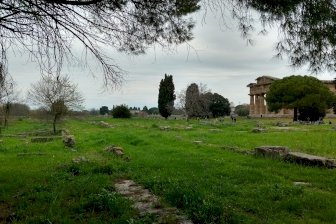
In the southern part of Italy, several cities and present day world heritage sites owe their founding to Greek colonists: Naples, Siracusa, and Agrigento are a few examples. Another is Paestum and the Vallo di Diano, situated 100km south of Naples. The overall area was also referred to as Magna Graecia and had Greek speakers well into the Middle Ages where it was still part of the Byzantine Empire.
Of the listed "Greeks in Italy" sites, Paestum is most like Agrigento. Both boast many great temple ruins. The main difference I would see is that Agrigento has the more stunning scenery with the temples located on hills overlooking the Mediterranean. The other noticeable difference is that different stones were used for the construction. The orange/brown/golden stones of Agrigento are just a site to behold.
I have to admit that I only visited Paestum and that the site contains more components. Most prominently, the site also includes a medieval monastery as this tries to cover to full time range of Greek settlement in the area. Still, Paestum is the jewel of the site and I would question the decision to include the larger area.
Getting There
Paestum has it's own train station connecting you to Salerno (north) and Reggio di Calabria (south). You can also connect eastwards and travel on to Taranto.
From the train station it's a short walk to the site. The first structures you will see are the massive walls running …
Keep reading 0 comments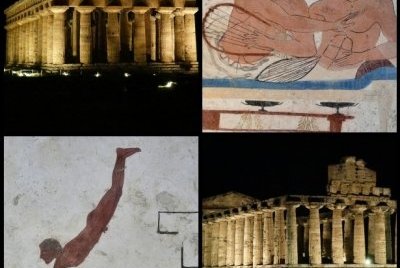
I visited this WHS in November 2018 staying overnight in Paestum. The long opening hours even in Autumn mean that you can time your visit in a way that it gets dark by the time you exit the archaeological site of Paestum and the three main temples are lit up (top left and bottom right photos). You can also revisit on the same day if you stay overnight and if you love buffalo mozzarella cheese and mozzarella in general you'll have a feast when in the area.
The Greek temples of Paestum are really striking in size and detail and are comparable to the inscribed ones of Agrigento are other ones in Sicily (Segesta or Selinunte). Unlike, Agrigento you can still walk 'inside' the roofless temples to get a closer look at the architecture. It's incredible that these ancient buildings stand tall and mighty while the rest of the 20th century towns and cities nearby are mostly crumbling!
Apart from the largest and most impressive structures - the Temple of Neptune, the Basilica and the Temple of Ceres - there are other interesting things to see such as the heroon, the ekklesiasterion, the amphitheatre and also the high city walls which are one of the best preserved defensive walls in Magna Graecia.
The museum is really worth visiting and included with the entrance ticket. Just in front of it is a white marble UNESCO plaque on the Paestum part of this WHS which is quite easy to …
Keep reading 0 comments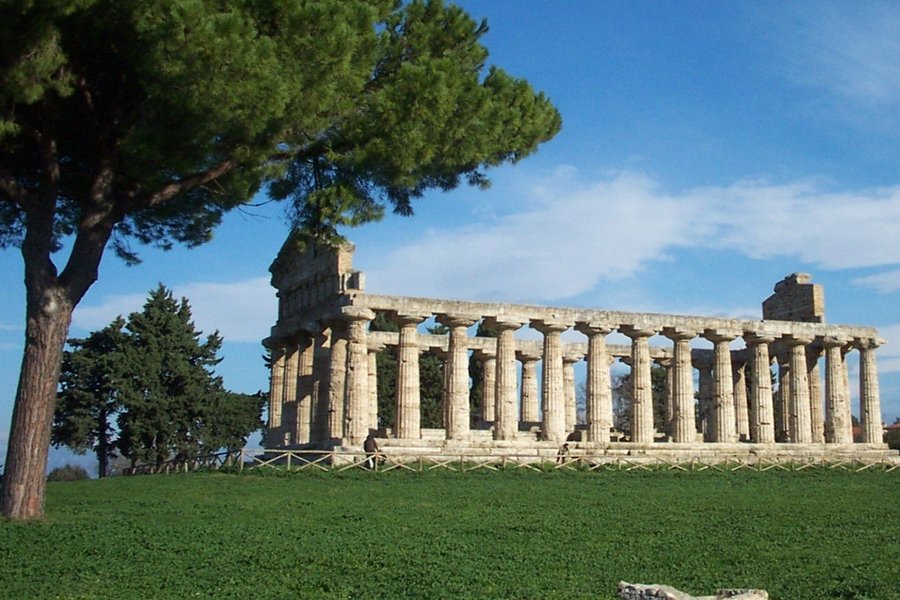
Paestum is the most underrated place I visited so far on my various trips to WHS. The three temples, especially the Apollo temple, are outstanding. No other Greek or Roman temple I saw so far can match them. Paestum together with Velia would deserve a separate WHS instead of being tucked together with the rather unspectacular villages and places that are included in the same world heritage site.
Keep reading 0 comments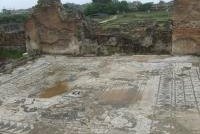
This site covers a huge area, including a wealth of coastal, rural and mountain scenery. Besides this I took trains to find the ancient Greek enclave of Velia (near Ascea station) with its mosaics. I then returned to Paestum (which has its own station) to see the statuesque temples of Athena, Neptune and Hera, all reminiscent of Athens.
Trenitalia runs a bus service from Battipaglia down the Vallo di Diano to Padula which I took to visit the huge San Lorenzo monastery.
Keep reading 0 comments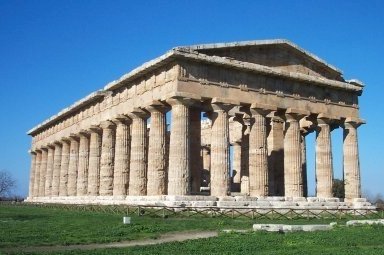
From my hotel in Paestum, I explored this rather large area in two stages. On the first day, I visited the archaeological remains in Paestum itself. The ancient Greek buildings are in unbelievably good condition. They are the best examples I've ever seen, they may even be the best around in what's left of Ancient Greece. The local museum is also worthwhile, especially to see the painted coffins like the Tomb of the Diver (as old as 480 BC).
Two days later I got back in the car and crisscrossed the valleys. I had some trouble finding the places I wanted to see (that happens quite often), so I spent more time behind the wheel than I had hoped for. But I did reach ancient Elea, where the round Porta Rosa gate overlooks its surroundings like a medieval tower.
In Padula, on the other side of the valley, the San Lorenzo charterhouse is a mighty building. It shows a far more recent episode in Cilento's history: the design is mainly Baroque. The city of Padula itself is strategically built on a hilltop, which you see quite often in this region. Roccagloriosa and Roccadaspide are two other good examples of these medieval building tactics.
Keep reading 0 comments
